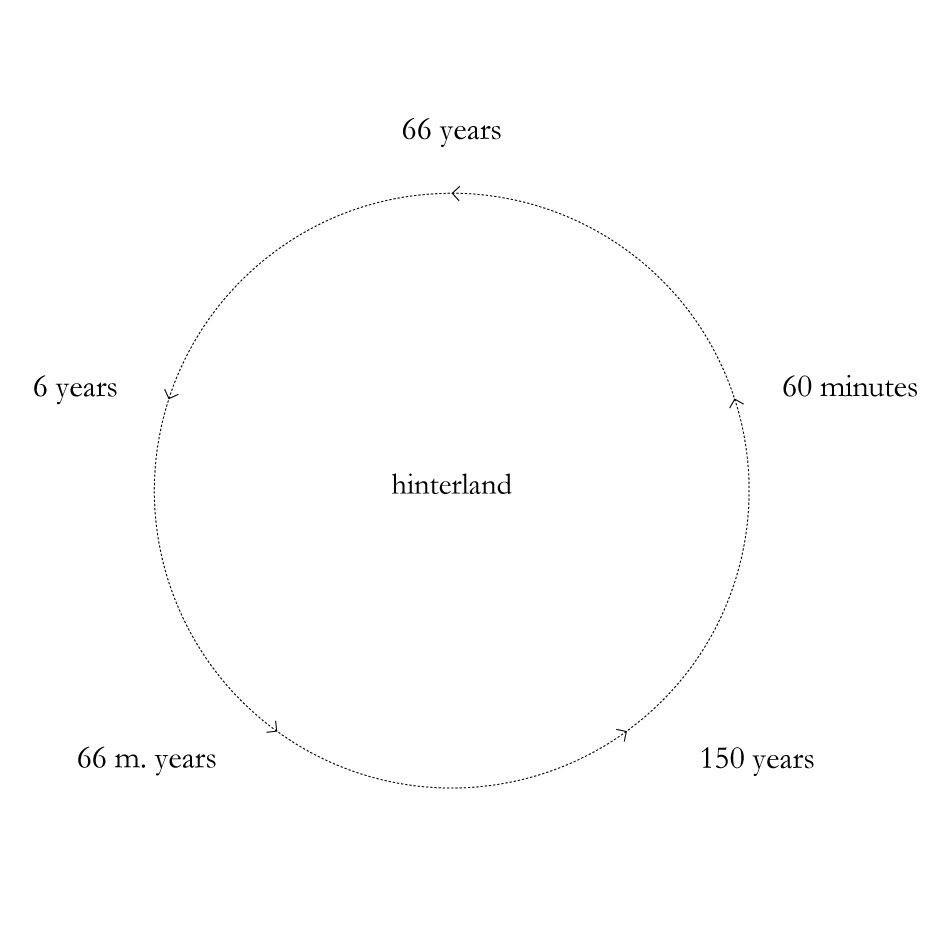TEMPORALITIES
To better understand the hinterland, perhaps one should not consider it as an area, but rather through the lens of time. Time inhabits all living forms, forcing them to organize themselves and their actions according to temporal logic.[7] According to Darwin, life is linked to the movement of time, transforming being into becoming. His work introduces the concept of the event in which appearances of life evolve and transform themselves.[8] Time does not control existence but structures it and indicates its actions. It is often manifested in matter and space through the capturing and structuring of temporal movement in the transformation of objects. Time is also linked to growth, change, and decay.[9]
According to artist Robert Smithson, referring only to perception and cognition does not provide sufficient methods of analysis. Fascinated by the dichotomy between urban and suburban areas in his work The Monuments of Passaic, Smithson uses different temporalities to reveal the ambiguity and complexity of the space of the suburb in his narrative: ‘the psychological time of the individual, the social time of culture and its symbols, and the time of geological change’.[10] It enables one to picture and connect different layers of the landscape.[11] As Overdijk states: ‘Our perception of it (the suburb, author), he argues, is the result of learned conventions, such as linear perspective, that present themselves as “natural” conditions but are in fact not. […] He aims to precisely disrupt what he sees as the “illusion” of unity in his experience of the suburb’.[12] Smithson’s explications of time not only refered to the notion of entropy but also introduced the term ‘time-crystals’. A crystal comes about by repeating the same arrangements of molecules, more replicating itself rather than progressing and developing.[13] This idea does not use classic, linear temporality, but rather treats time as ‘frozen timelessness within temporality itself’.[14]
‘Time is deranged. A landslide of diamonds plunges into a polar crevasse of boundless dimension. History no longer exists’.[15] The illusion and subjectivity of time creates various understandings of the same place. Temporalities are then to be considered as intertwined fragments of the whole.
This research on the transition of the hinterland uses these concepts to delineate different Fig.s of the region, accumulating in the city/non-city continuum. Various time frames are brought forward in the attempt to show the correlation between certain relevant events and the current phase in Western Macedonia’s existence. The hypothesis is that if certain characteristics are interwoven, then perhaps temporalities will allow us to position ourselves within the next stages of the hinterland’s ‘becoming’.

